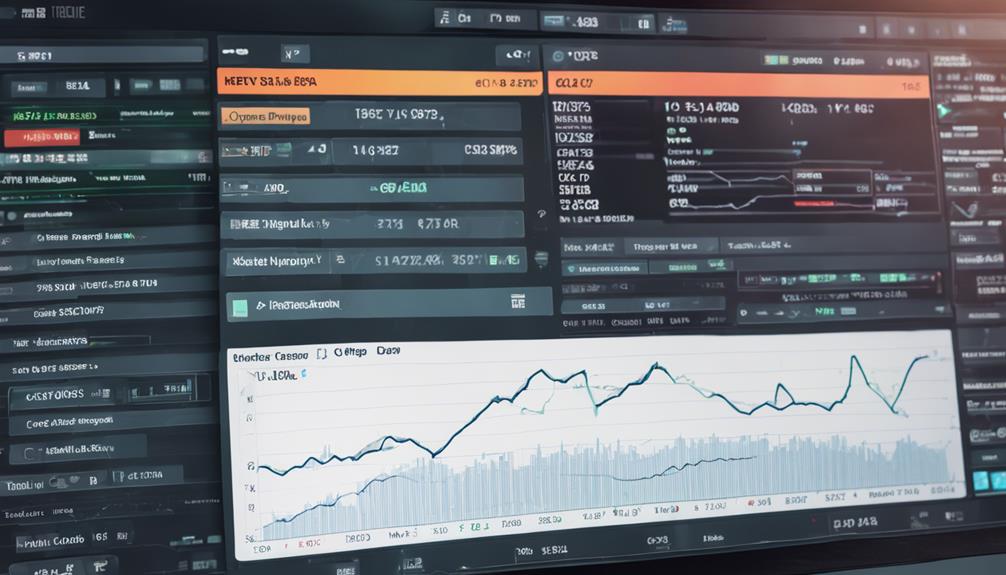If you think keeping tabs on Hong Kong stock performance is complex, think again. With the right tools and strategies, you can navigate the dynamic market with ease.
By understanding key metrics and utilizing advanced tracking tools, you can stay ahead of the game. Whether you're a seasoned investor or just starting out, mastering stock performance tracking in Hong Kong can be your key to success in the global financial arena.
Understanding the Hong Kong Stock Exchange
If you want to grasp the fundamentals of the Hong Kong Stock Exchange, start by understanding its rich history and pivotal role in the global financial markets.
Established in 1891 as the Association of Stockbrokers in Hong Kong and later renamed the Hong Kong Stock Exchange in 1914, HKG is the sole securities and derivatives exchange in Hong Kong. It stands as one of the largest stock exchanges globally in terms of market capitalization.
The exchange facilitates the trading of various securities, including stocks, ETFs, and funds, all denominated in Hong Kong dollars. Notably, the Hang Seng Index, a key indicator of the market performance in Hong Kong, comprises major Chinese companies listed on the exchange.
The Hong Kong Stock Exchange operates during specific trading hours, offering investors ample opportunities to engage with the market and make informed decisions based on the dynamic global financial landscape.
Key Metrics for Stock Performance Tracking
To effectively track the performance of Hong Kong stocks, focus on key metrics such as total return, price change, dividend yield, volatility, and sector allocation. These metrics provide valuable insights into how stocks in the Hong Kong stock market are performing.
Total return represents the overall performance of a stock, considering both price appreciation and dividends received. Price change indicates the fluctuation in the stock's price over a specific period, reflecting market sentiment and company performance. Dividend yield shows the percentage of dividends paid relative to the stock's price, offering income to investors.
Volatility measures the degree of variation in a stock's trading price, indicating risk levels. Sector allocation highlights the distribution of investments across different industry segments, showcasing the stock's exposure to various economic factors.
Understanding these metrics is crucial for assessing the impact of factors such as the Hang Seng Index (HSI) and market trends on stock performance, especially in significant markets like the US.
Analyzing Market Trends and Patterns

Analyze historical price movements and volume trends in the Hong Kong stock market to identify patterns and potential opportunities. By recognizing chart patterns like head and shoulders, double tops, and triangles, you can make more informed investing decisions in the Hang Seng index.
Incorporate technical analysis indicators such as moving averages, RSI, MACD, and Fibonacci retracements to predict potential future price movements in Hong Kong stocks. Keep a close eye on support and resistance levels as they can signal crucial entry and exit points for your trades.
Stay vigilant for signs of trend reversals, breakouts, and consolidation phases, adjusting your strategy accordingly to navigate the dynamic market conditions in Hong Kong. By understanding these market trends and patterns, you can enhance your investing strategy and potentially capitalize on opportunities within the Hong Kong stock market.
Utilizing Stock Performance Tracking Tools

Transitioning from analyzing market trends and patterns, efficiently track the price and performance of Hong Kong stocks, ETFs, and funds by utilizing Sharesight's comprehensive reporting tools. Sharesight allows investors to gain a portfolio-wide view of their Hong Kong investments, including tracking dividend income and distribution.
With Sharesight, investors can access powerful performance reports like Performance, Diversity, and Contribution Analysis tailored for the Hong Kong market. Moreover, Sharesight simplifies the process by automatically tracking dividend and distribution income, providing a holistic view of returns. This tool also enables users to backfill past dividends and consider currency fluctuations, ensuring accurate tracking of Hong Kong stock performance.
– Can I Use the Same Tracking Methods for Technology Stocks as I Would for Other Stocks in Hong Kong?
When it comes to investing in technology stocks in Hong Kong, it’s important to keep in mind that the same tracking methods may not always apply. However, staying updated on industry trends and market news can still provide valuable tips for Hong Kong stocks in the tech sector.
Implementing Strategies for Effective Monitoring

Consider utilizing Sharesight's automated tracking tools to effectively monitor the performance of your Hong Kong stocks, ETFs, and funds. By leveraging Sharesight's capabilities, you can stay informed about the performance of the Hang Seng and other key indices, enabling you to make well-informed decisions when investing in Hong Kong.
Sharesight's platform provides comprehensive insights into the political and economic factors impacting the performance of the Hong Kong market, including currency fluctuations and global economic trends. With Sharesight's tools, you can track how your investments correlate with the underlying index, ensuring you stay ahead of market movements.
Moreover, utilizing Sharesight's dividend tracking feature allows you to assess the impact of dividends on your total returns, enhancing your understanding of your investment portfolio's performance. Take a proactive approach to monitoring price fluctuations, dividend income, and total portfolio returns with Sharesight's user-friendly and efficient tools.
Frequently Asked Questions
How Do You Keep Track of Stock Performance?
To keep track of stock performance, track stock trends, price movement, and portfolio tracking. Utilize market analysis, investment tracking, and performance evaluation. Monitor market indicators, stock monitoring, and financial tracking for accurate stock analysis.
How Do You Determine the Performance of a Stock?
To determine a stock's performance, analyze historical data, study price movement, assess market trends, review company earnings, consider dividend yield, monitor volatility index, heed analyst recommendations, compare against peers, and track trading volume.
Which Index Represents the Performance of the Hong Kong Stock Market?
The Hang Seng Index on the Hong Kong Stock Exchange represents market performance. It tracks 50 key companies, reflecting economic health. Analyze financial data, industry trends, and stock valuation to inform investment strategy and portfolio analysis.
How Is Stock Market Performance Tracked?
To track stock market performance effectively, you analyze market indicators, evaluate trends, and consider economic factors. By monitoring metrics like total return and price-to-earnings ratio, you can assess stock valuation, refine investment strategies, and manage portfolios.
Conclusion
In conclusion, tracking Hong Kong stock performance with Sharesight is essential for informed decision-making. Remember, 'Don't put all your eggs in one basket.'
By monitoring your investments regularly and utilizing the tools available, you can maximize your returns and navigate the dynamic market with confidence.
Happy investing!
